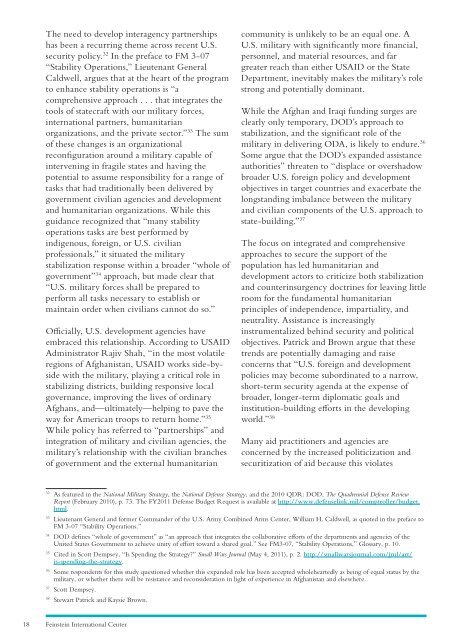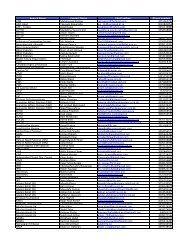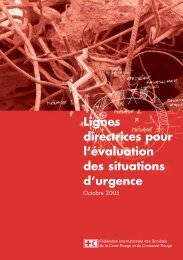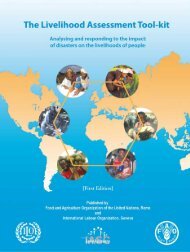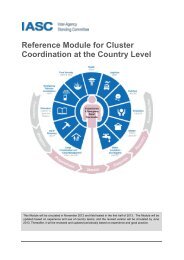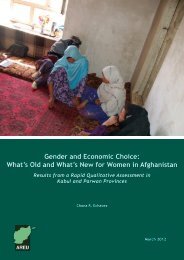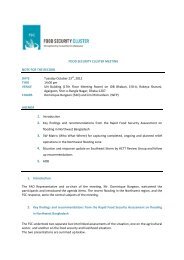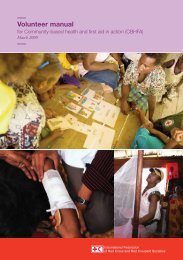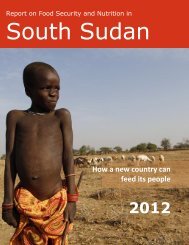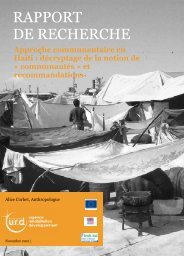Winning Hearts and Minds? - Tufts - Tufts University
Winning Hearts and Minds? - Tufts - Tufts University
Winning Hearts and Minds? - Tufts - Tufts University
Create successful ePaper yourself
Turn your PDF publications into a flip-book with our unique Google optimized e-Paper software.
The need to develop interagency partnershipshas been a recurring theme across recent U.S.security policy. 32 In the preface to FM 3-07“Stability Operations,” Lieutenant GeneralCaldwell, argues that at the heart of the programto enhance stability operations is “acomprehensive approach . . . that integrates thetools of statecraft with our military forces,international partners, humanitarianorganizations, <strong>and</strong> the private sector.” 33 The sumof these changes is an organizationalreconfiguration around a military capable ofintervening in fragile states <strong>and</strong> having thepotential to assume responsibility for a range oftasks that had traditionally been delivered bygovernment civilian agencies <strong>and</strong> development<strong>and</strong> humanitarian organizations. While thisguidance recognized that “many stabilityoperations tasks are best performed byindigenous, foreign, or U.S. civilianprofessionals,” it situated the militarystabilization response within a broader “whole ofgovernment” 34 approach, but made clear that“U.S. military forces shall be prepared toperform all tasks necessary to establish ormaintain order when civilians cannot do so.”Officially, U.S. development agencies haveembraced this relationship. According to USAIDAdministrator Rajiv Shah, “in the most volatileregions of Afghanistan, USAID works side-bysidewith the military, playing a critical role instabilizing districts, building responsive localgovernance, improving the lives of ordinaryAfghans, <strong>and</strong>—ultimately—helping to pave theway for American troops to return home.” 35While policy has referred to “partnerships” <strong>and</strong>integration of military <strong>and</strong> civilian agencies, themilitary’s relationship with the civilian branchesof government <strong>and</strong> the external humanitariancommunity is unlikely to be an equal one. AU.S. military with significantly more financial,personnel, <strong>and</strong> material resources, <strong>and</strong> fargreater reach than either USAID or the StateDepartment, inevitably makes the military’s rolestrong <strong>and</strong> potentially dominant.While the Afghan <strong>and</strong> Iraqi funding surges areclearly only temporary, DOD’s approach tostabilization, <strong>and</strong> the significant role of themilitary in delivering ODA, is likely to endure. 36Some argue that the DOD’s exp<strong>and</strong>ed assistanceauthorities” threaten to “displace or overshadowbroader U.S. foreign policy <strong>and</strong> developmentobjectives in target countries <strong>and</strong> exacerbate thelongst<strong>and</strong>ing imbalance between the military<strong>and</strong> civilian components of the U.S. approach tostate-building.” 37The focus on integrated <strong>and</strong> comprehensiveapproaches to secure the support of thepopulation has led humanitarian <strong>and</strong>development actors to criticize both stabilization<strong>and</strong> counterinsurgency doctrines for leaving littleroom for the fundamental humanitarianprinciples of independence, impartiality, <strong>and</strong>neutrality. Assistance is increasinglyinstrumentalized behind security <strong>and</strong> politicalobjectives. Patrick <strong>and</strong> Brown argue that thesetrends are potentially damaging <strong>and</strong> raiseconcerns that “U.S. foreign <strong>and</strong> developmentpolicies may become subordinated to a narrow,short-term security agenda at the expense ofbroader, longer-term diplomatic goals <strong>and</strong>institution-building efforts in the developingworld.” 38Many aid practitioners <strong>and</strong> agencies areconcerned by the increased politicization <strong>and</strong>securitization of aid because this violates32As featured in the National Military Strategy, the National Defense Strategy, <strong>and</strong> the 2010 QDR: DOD, The Quadrennial Defense ReviewReport (February 2010), p. 73. The FY2011 Defense Budget Request is available at http://www.defenselink.mil/comptroller/budget.html.33Lieutenant General <strong>and</strong> former Comm<strong>and</strong>er of the U.S. Army Combined Arms Center, William H. Caldwell, as quoted in the preface toFM 3-07 “Stability Operations.”34DOD defines “whole of government” as “an approach that integrates the collaborative efforts of the departments <strong>and</strong> agencies of theUnited States Government to achieve unity of effort toward a shared goal.” See FM3-07, “Stability Operations,” Glossary, p. 10.35Cited in Scott Dempsey, “Is Spending the Strategy?” Small Wars Journal (May 4, 2011), p. 2. http://smallwarsjournal.com/jrnl/art/is-spending-the-strategy.36Some respondents for this study questioned whether this exp<strong>and</strong>ed role has been accepted wholeheartedly as being of equal status by themilitary, or whether there will be resistance <strong>and</strong> reconsideration in light of experience in Afghanistan <strong>and</strong> elsewhere.37Scott Dempsey.38Stewart Patrick <strong>and</strong> Kaysie Brown.18Feinstein International Center


